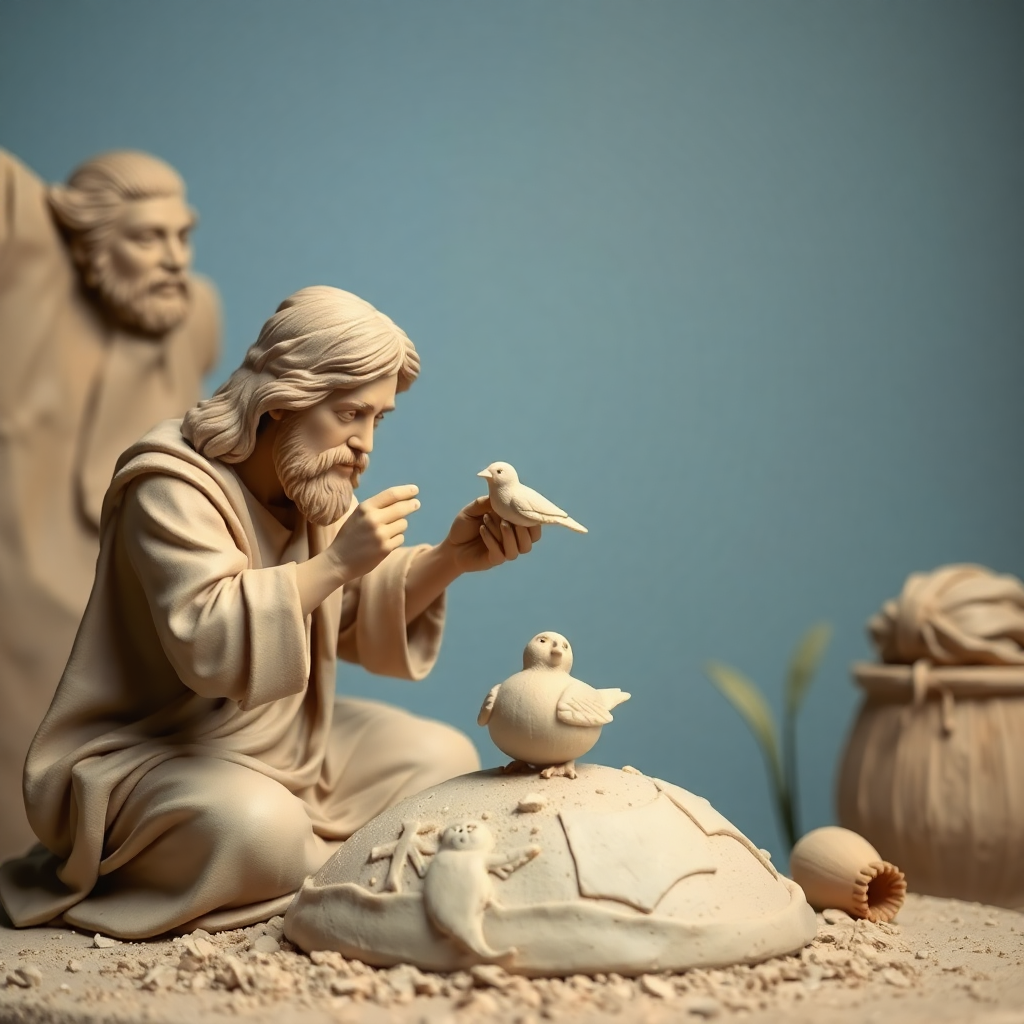Jesus made birds from clay. Why?
Explore the apocryphal miracle of Jesus creating birds from clay—found in the Infancy Gospel of Thomas—and its rich symbolism for spiritual transformation, divine authority, and compassion. A fresh look at Jesus’ childhood miracles through the lens of faith and renewal.
There was a season in my life when I felt like nothing more than dust—shapeless, silent, waiting. I had lost momentum in my writing, my prayers felt hollow, and even scripture seemed distant. I remember sitting at my desk, staring at a blank page, wondering if anything meaningful could emerge from the chaos within me.
Then I stumbled upon the apocryphal story of Jesus forming birds from clay. It wasn’t part of the canonical Gospels, but something about it gripped me. The image of Jesus—young, tender, intentional—kneeling in the dirt, shaping lifeless clay into something that could soar. It felt like a whisper to my soul.
I realized: I was the clay. Hardened by disappointment, cracked by silence. And yet, still held in His hands.
That story reminded me that Jesus doesn’t just work with the polished and the perfect. He breathes life into the broken, the overlooked, the inert. He sees potential where we see failure. And sometimes, the miracle isn’t in the soaring—it’s in the shaping.
I’m still learning to trust that. To believe that even when I feel immovable, He is forming something in me. Something that might one day take flight.
Demonstration of Jesus’ Authority over Creation
When Jesus shaped birds from clay, He wasn’t just performing a miracle—He was revealing a divine truth about transformation. Clay is raw, earthy, and unrefined. It bears the fingerprints of every touch, every pressure. In many ways, it mirrors our own spiritual condition: formed from dust, vulnerable to cracks, and yet full of potential in the hands of the Creator.
By breathing life into lifeless clay, Jesus shows us that renewal doesn’t begin with perfection—it begins with surrender. The clay doesn’t resist the shaping. It yields. And in that yielding, it becomes something new. Something that can fly.
This miracle becomes a metaphor for spiritual rebirth. Just as those clay birds were lifted from the ground and given wings, so too are we invited to rise—not by our own strength, but by the breath of divine grace. Jesus doesn’t discard the broken or the dry. He reshapes. He restores. He releases.
The Symbolic Significance of the Story
This account, drawn from the Infancy Gospel of Thomas, is not considered historical by most Christian denominations. Yet its symbolic richness continues to inspire theological dialogue and personal reflection. Like many apocryphal texts, it offers imaginative insight into Jesus’ divine nature and the transformative power of His touch.
Closing Reflection: Not Wings, but Hands
The creation of birds from clay wasn’t merely a spectacle—it may have been a sacred teaching moment, crafted for the hearts of Jesus’ disciples and followers. In shaping lifeless earth into living creatures, Jesus illustrated profound spiritual truths: that faith breathes life into the inert, that trust in God transforms the ordinary, and that divine power is not distant but intimately present.
Imagine the disciples watching—eyes wide, hearts stirred—as clay birds lifted into the air. It wasn’t just a miracle; it was a metaphor. The clay, like their own souls, was being formed, animated, and released. Through this act, Jesus may have been inviting them to see themselves as moldable in the hands of the Creator, capable of flight only through surrender.
This moment, though apocryphal, echoes a timeless truth: spiritual understanding is not given—it’s shaped. And sometimes, the shaping begins with wonder.
And maybe that’s the miracle I needed most—not proof, but presence. Not wings, but hands. The kind that shapes, restores, and never lets go.
